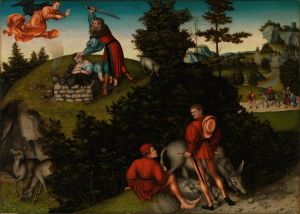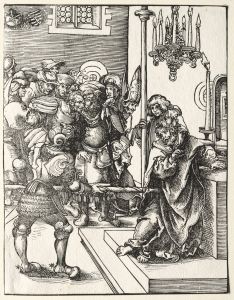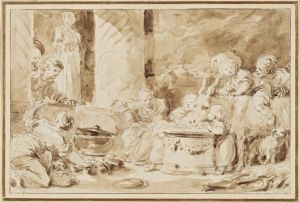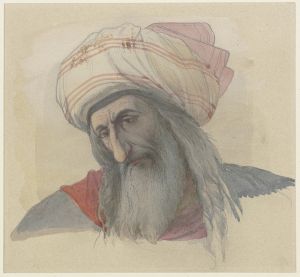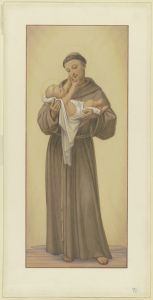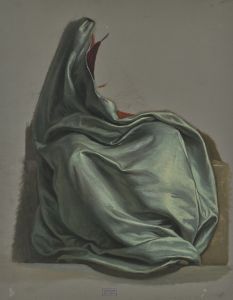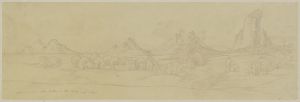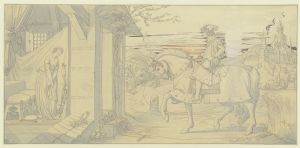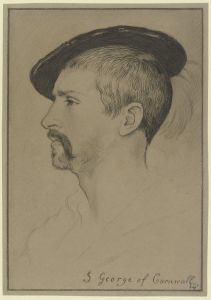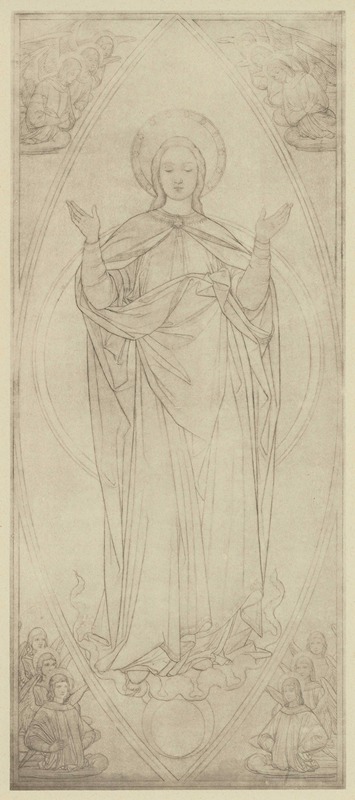
Entwurf zu einem Altar Mittelbild
A hand-painted replica of Eduard von Steinle’s masterpiece Entwurf zu einem Altar Mittelbild, meticulously crafted by professional artists to capture the true essence of the original. Each piece is created with museum-quality canvas and rare mineral pigments, carefully painted by experienced artists with delicate brushstrokes and rich, layered colors to perfectly recreate the texture of the original artwork. Unlike machine-printed reproductions, this hand-painted version brings the painting to life, infused with the artist’s emotions and skill in every stroke. Whether for personal collection or home decoration, it instantly elevates the artistic atmosphere of any space.
Eduard von Steinle was a notable 19th-century German painter associated with the Nazarene movement, which sought to revive honesty and spirituality in Christian art. One of his works, "Entwurf zu einem Altar Mittelbild," translates to "Design for a Central Altarpiece." This piece reflects Steinle's commitment to religious themes and his skill in creating art intended for ecclesiastical settings.
Steinle was born in Vienna in 1810 and later moved to Frankfurt, where he became a prominent figure in the art scene. He was deeply influenced by the Nazarene movement, which was founded in the early 19th century by a group of young German artists who sought to return to the purity and spirituality of medieval and early Renaissance art. This movement was characterized by its emphasis on religious subjects, clear lines, and bright colors, all of which are evident in Steinle's work.
"Entwurf zu einem Altar Mittelbild" is a design for a central panel of an altarpiece, a common format in Christian liturgical art. Altarpieces are typically placed at the back of the altar in a church and serve as a focal point for worshippers. They often depict scenes from the Bible, the lives of saints, or other religious themes. Steinle's design would have been intended to inspire devotion and reflection among the faithful.
While specific details about the content of "Entwurf zu einem Altar Mittelbild" are not widely documented, Steinle's other works provide insight into his style and thematic preferences. His paintings often feature biblical scenes, saints, and allegorical figures, rendered with a meticulous attention to detail and a harmonious composition. Steinle was known for his ability to convey emotion and spirituality through his art, qualities that would have been essential for a piece intended for a religious setting.
Steinle's work was highly regarded during his lifetime, and he received numerous commissions for churches throughout Germany and Austria. His designs for altarpieces and frescoes contributed to the revival of religious art in the 19th century, aligning with the broader goals of the Nazarene movement. Steinle's influence extended beyond his own creations, as he also taught and mentored other artists, helping to spread the ideals of the Nazarenes.
In summary, "Entwurf zu einem Altar Mittelbild" by Eduard von Steinle exemplifies the artist's dedication to religious art and his role in the Nazarene movement. Although specific details about this particular design are limited, it is representative of Steinle's broader body of work, which sought to inspire faith and devotion through art. His contributions to religious art in the 19th century remain significant, reflecting a period of renewed interest in spirituality and tradition in European art.





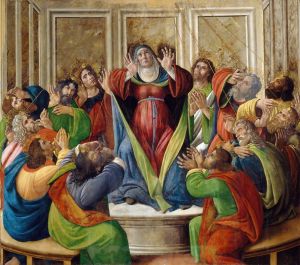
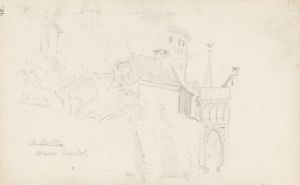
![Design for unidentified interior.] [Drawing of columned hall with altar on a stepped plinth and decorative frieze featuring elephants](/imgs/249300/s/winold-reiss-design-for-unidentified-interior-drawing-of-columned-hall-with-altar-on-a-stepped-plinth-and-decorative-frieze-featuring-elephants-5fe6009d.jpg)
